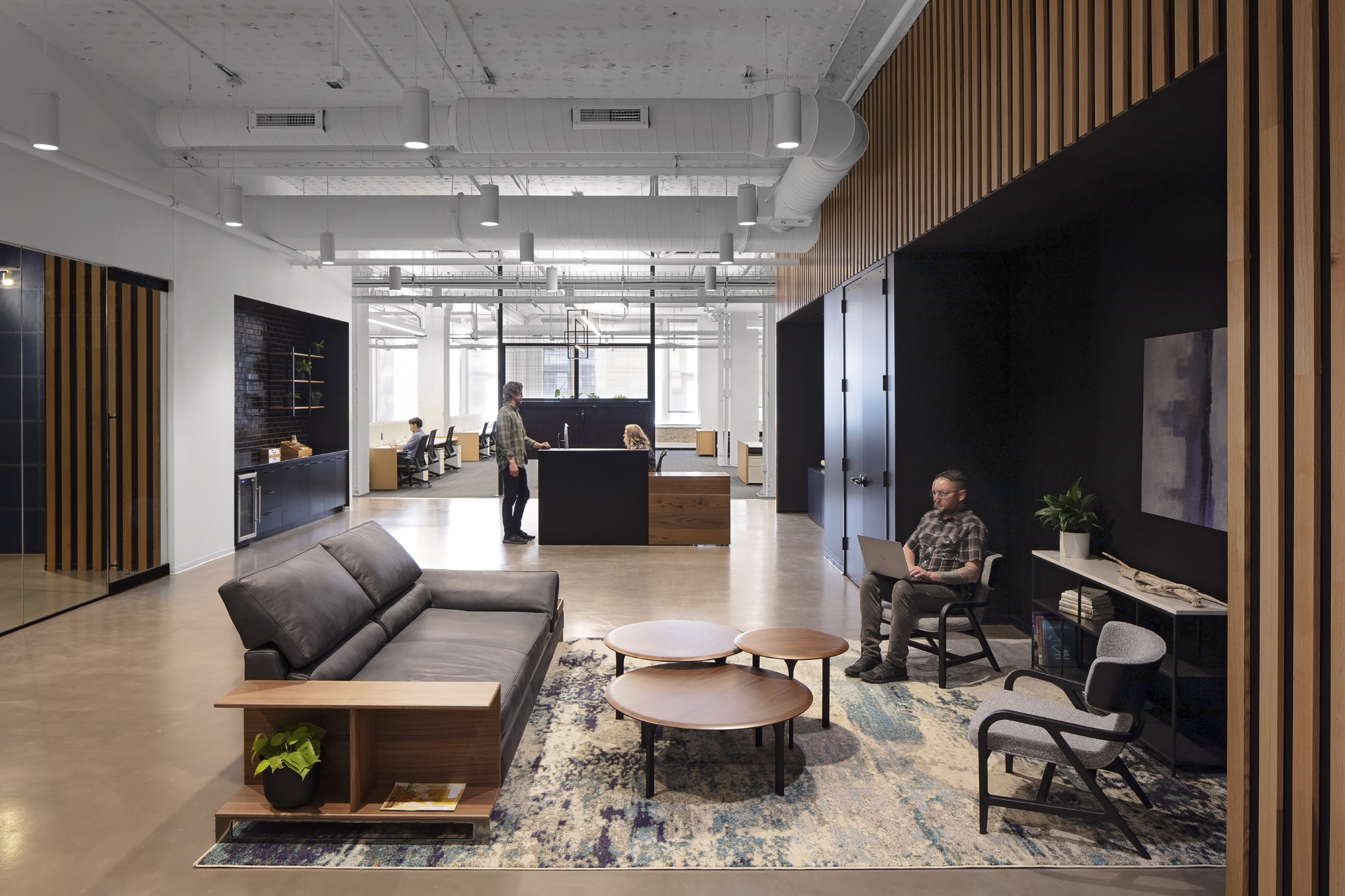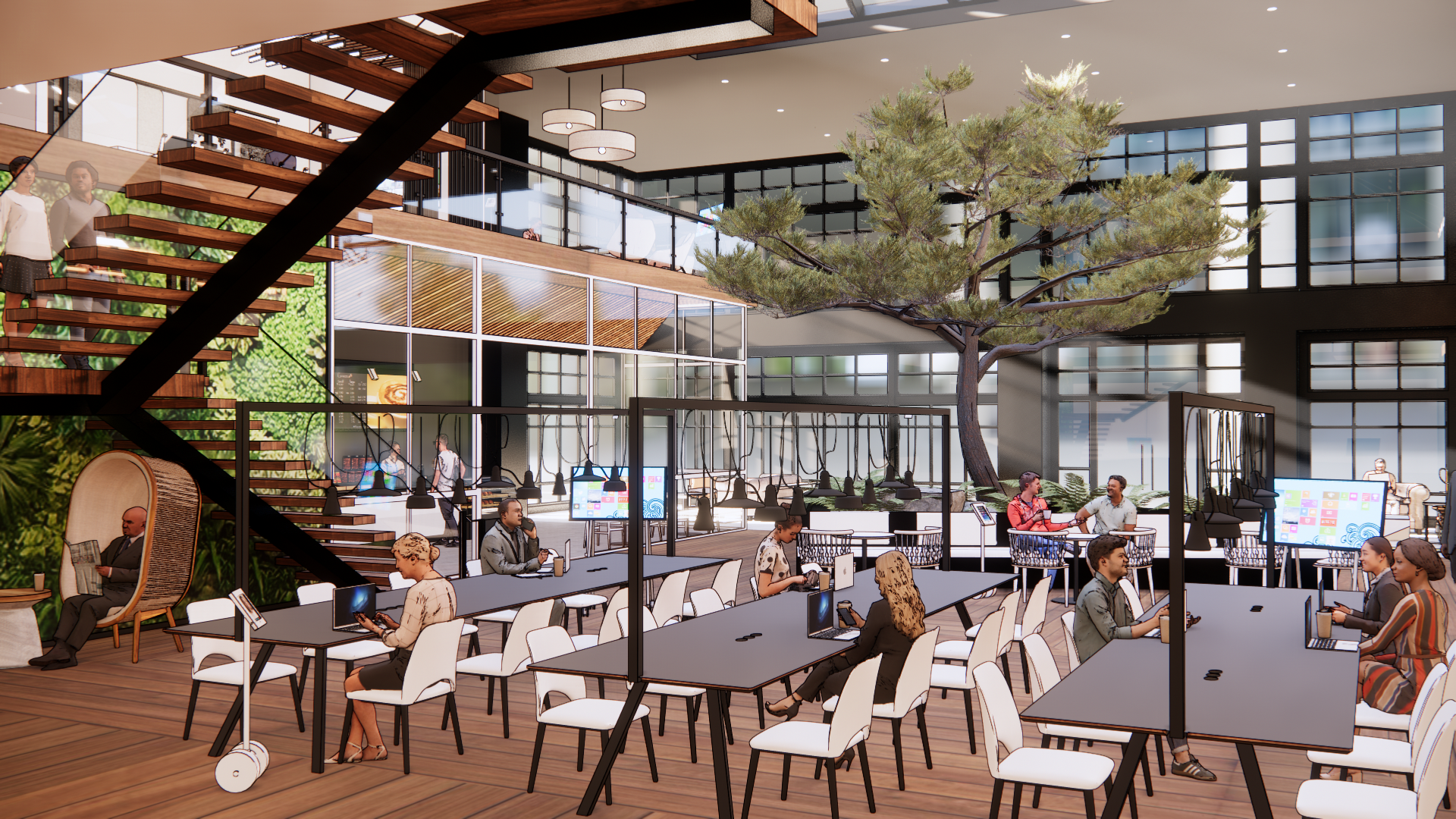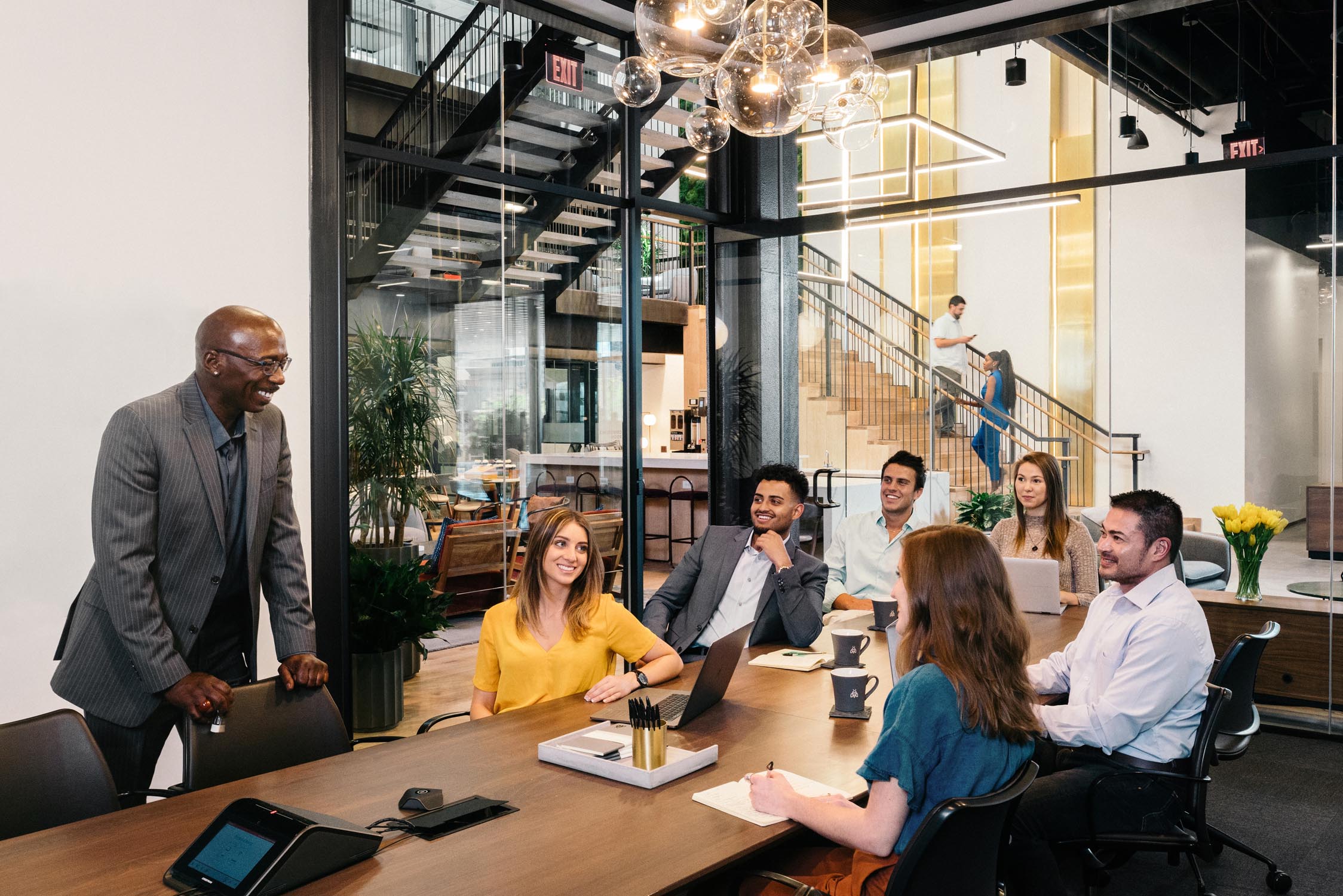Creating Space(s) For All
By: Kristin Cerutti
After experiencing the collective trauma of COVID-19, today’s workforce is now in the thick of what is being called “The Great Resignation”. Studies show that a huge part of making feel comfortable, safe and productive has to do with their environment. On top of that, most employees are feeling better supported in their physical space at home, than in the office. Given that, how can employers provide physical spaces to accept their teammates where they are and provide them with a place to thrive rather than just survive?
With this in mind, how can employers and designers bring a more empathetic perspective to workplace design? Keep reading for key principles on creating a better work environment:
1. Know Your Customer
Your “customers” are your employees. We’ve always been taught that one of the key rules in business (after staying in business) is understanding your customer base. And the more engaged an employee is, the more productive they are. We also know the more productive employees are, the more financially stable the companies they work for tend to be. In what’s now being called “The Great Resignation” employees leaving their current place of employment are stating that it’s largely because they don’t feel heard or supported.
An office renovation/relocation is the perfect opportunity to reengage and reinvigorate your teammates. During the process, get as many people are involved early to hear experiences on what is and isn’t working. Along the way, keep employees updated with regularly scheduled updates. This will not only help them feel heard but will make managing the change easier on you as well.

Old Mission Capital | NELSON Worldwide
2. Honest Transparency
The most important thing is to start the conversation. This lets employees know that you’re trying and willing to have open and honest discussions around their needs. In turn, it will most certainly lead to your teammates being more willing to come to you when they need assistance and to a feeling of being supported and heard. You cannot be expected to know every individual’s needs, but if you open the line of communication, you will be more likely to have those who really need your help and support, reach out so you have the opportunity to accommodate them.
3. From Fixed To Fluid
Be willing to test out new ideas and if they aren’t working, be ready and willing to pivot. The most resilient organizations are those that are agile and willing to flex and change direction when needed. Your space needs to be just as flexible as your organization in order to adequately support it rather than hindering you in those key moments. Not only giving your employees choice in where and when to work, but allowing those within the physical space to choose where and how they work.
Also, consider utilizing the “kit of parts” we’ve all come to know and love in a new and different way. Instead of providing cookie-cutter spaces that are all the same, think of spaces more like the individuals that occupy them – unique settings that are individually adaptable to support the needs of your teammates. Build spaces on a module and consider demountable solutions that will more easily allow you to make physical changes down the road without significant cost or schedule impact.

Social Clubs Concept by NELSON Worldwide
4. Empowered Employees
Start early with your change management efforts. Get employees excited for the change, ease them into the process by allowing them to see the space either in-person or virtually before the move. Train them on how to use their new space (furniture, moveable walls, etc.) Allow them to bring friends and family in to show it off and increase their pride in the space. And, most importantly, get upper management to use the space in the way it was designed to be used.
This shows employees not only how to use it, but that it is okay to use it. This may seem silly to you, but people need to feel like they have permission to use the space without judgment and this is especially true if you’re coming from a space where previously everyone went to their assigned space and didn’t leave that space until they left at the end of the day.
5. Equity Of Experience
We have to understand that some people were able to work more effectively from home, where they had complete control of their environment. Therefore, if you are requiring your teammates to come back to the office in any capacity, some of that control will be taken away. How can we ease the minds of those coming back and allow those who will now be working in a hybrid environment and those with varying personal experiences and backgrounds to have equitable experiences?
Give people access to the tools to do their job effectively and then let them choose when, how, and where to use those tools to support themselves throughout the day.

Industrious | NELSON Worldwide
As the workforce returns to the office, the most successful organizations will intuitively adapt and respond to each unique worker’s needs. Whether they are in the physical office or working remote, keeping comfort, support, and equity at the top of mind is key to creating spaces for all.

Let's Connect:
Kristin Cerutti, Regional Design Leader
Kristin is a licensed, commercial interior designer with 18 years of experience leading the design effort on everything from corporate office headquarters and building repositioning projects to salons and fitness centers across the country. As a design and thought leader with NELSON Worldwide, Kristin focuses on designing spaces for all, is part of the DEI Council, and co-leads the Legal Workplace Practice. Making other people's lives better is what drives her, and her passions lie with being an adviser to and advocate for others. She says, “When we design for those who need us most, it benefits everyone in the process.” Outside of work, Kristin can be found volunteering for the Cystic Fibrosis Foundation, spending time in nature, visiting the newest vegan restaurants, and traveling the world: she’s been to all seven continents. Reach out to her at kcerutti@nelsonww.com.